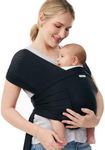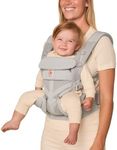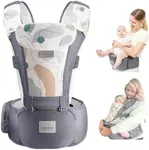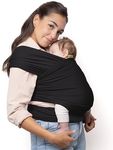Buying Guide for the Best Baby Sling Carriers
Choosing a baby sling carrier is all about finding a comfortable, safe, and practical way to carry your baby while keeping your hands free. The right sling can make outings easier, help with bonding, and even soothe a fussy baby. When shopping for a baby sling carrier, it's important to consider your lifestyle, your baby's age and size, and your own comfort. Understanding the key features will help you pick a carrier that fits your needs and keeps both you and your baby happy.MaterialThe material of a baby sling carrier affects comfort, breathability, and support. Common materials include cotton, linen, bamboo, and blends. Cotton is soft and easy to clean, linen is strong and cool for hot weather, and bamboo is gentle on sensitive skin. If you live in a warm climate or plan to use the sling outdoors, lighter and more breathable fabrics are ideal. For cooler climates or extra support, thicker materials may be better. Consider your baby's skin sensitivity and your own comfort when choosing the material.
Type of SlingThere are several types of baby slings, such as ring slings, wrap slings, and pouch slings. Ring slings use adjustable rings for a custom fit, wrap slings are long pieces of fabric you tie yourself, and pouch slings are sewn into a fixed loop. Ring slings are great for quick adjustments and sharing between caregivers, wraps offer the most versatility in carrying positions, and pouch slings are simple but less adjustable. Think about how much adjustability you want and how comfortable you are with tying or adjusting fabric.
Weight LimitThe weight limit tells you the range of baby sizes the sling can safely support. Some slings are designed for newborns, while others can carry toddlers. Lower weight limits (up to 15 pounds) are best for newborns, while higher limits (up to 35 pounds or more) can accommodate older babies and toddlers. Choose a sling with a weight range that matches your baby's current size and how long you plan to use the carrier.
Ease of UseEase of use refers to how simple it is to put on, adjust, and take off the sling. Some slings require practice to use correctly, while others are more intuitive. If you want something quick and easy, look for slings with minimal adjustments or clear instructions. If you're comfortable learning new techniques, wraps and ring slings offer more flexibility. Consider your daily routine and how often you'll need to put the sling on by yourself.
Support and ComfortSupport and comfort are crucial for both you and your baby. A good sling should distribute your baby's weight evenly to prevent strain on your back and shoulders. Wide, padded straps and ergonomic designs help with this. For your baby, the sling should support their head, neck, and hips in a natural position. If you plan to carry your baby for long periods, prioritize slings with extra padding and ergonomic support.
AdjustabilityAdjustability means how well the sling can be customized to fit different body types and carrying positions. Adjustable slings are great if more than one person will use the carrier or if you want to switch between front, hip, or back carries. Fixed-size slings are simpler but may not fit everyone comfortably. Think about who will use the sling and whether you'll need to adjust it often.
Safety FeaturesSafety features include secure stitching, strong rings or buckles, and clear instructions for safe use. A safe sling should hold your baby snugly without risk of slipping or sagging. Look for slings that meet recognized safety standards and always follow the manufacturer's guidelines. Your baby's safety is the top priority, so never compromise on this aspect.


















